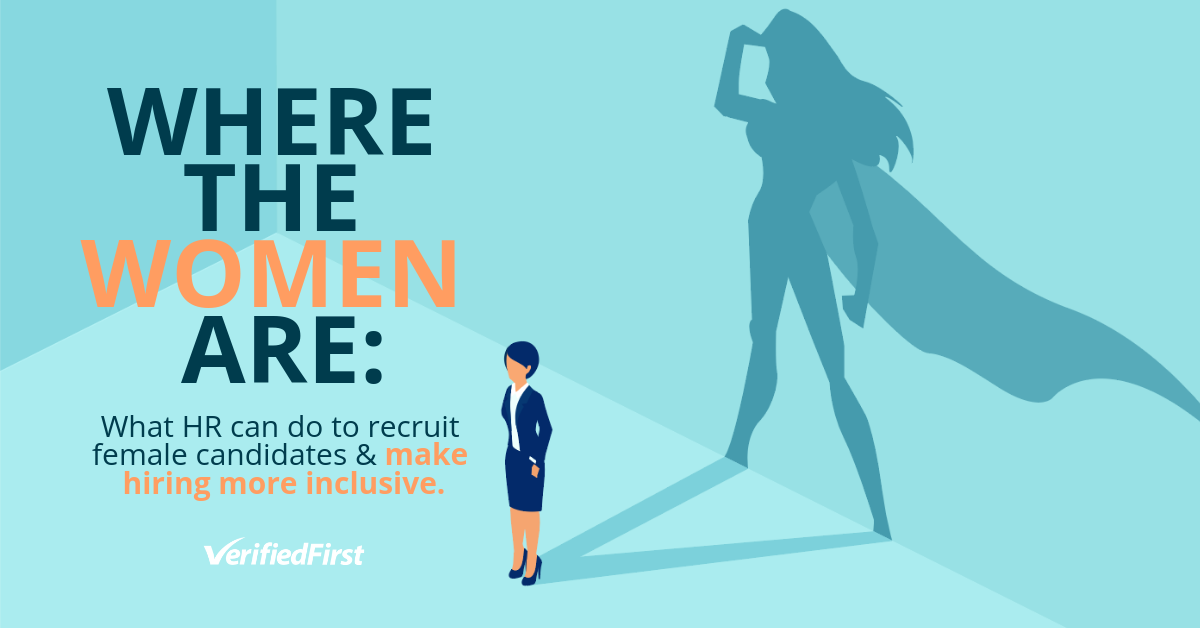
Executives often tell recruiters to hire female employees, and for good reason. According to McKinsey and Co, companies in the top quarter for gender diversity are 21 percent more likely to have higher profits. But it’s one thing to want female employees—it’s an entirely separate thing to actively recruit them, and the difficulty of recruiting women often depends on the industry. Here’s where recruiters are sourcing female employees, and the dos.
According to Monster, the top five industries with the most female employees at current are child care services (94% female), home health care (89% female), social services (85% female), veterinary services (81% female) and educational services (75% female). Of these, women experience the highest earnings as veterinarians, with the average pay of $87k, and the lowest earnings in home health care at just over $21k.
Overall, women are employed alongside men, with 52 percent of women working in management level and professional jobs, according to the Bureau of Labor Statistics. However, this equality crumbles when it comes to leadership positions. According to CIO, there are 24 female CIOs in the Fortune 500. That’s just 4.8 percent. This goes across industries: In the legal industry, 45 percent of associates are women, but only 22 percent of partners are women, according to the American Bar Association. There’s a similar trend for women in medicine, academics, and finances, according to the Center for American Progress.
The first barrier to getting female candidates is your job description. According to the Harvard Business Review, women don’t apply to a job unless they feel they meet 100% of the qualifications for jobs, while men will apply if they feel they meet 60% of the qualifications. You can get more female applicants by limiting your qualifications to the necessities, and saving the extra skills for your “preferred skills” section. You should also make sure your LinkedIn, and other social media platforms, reflect the diversity you want at your office. According to LinkedIn, 41% of women research the company they’re thinking about applying to. When they do that research, make sure your company looks attractive to them. That said, do this without tokenizing anyone-- women will know if you’re just posting photos of the one woman who works in your department.
According to TrustSphere, women have networks outside of work that are about three times the size of mens’ networks. Recruiters should leverage this, by encouraging female employees at their companies to encourage their female friends to apply to jobs. There are also countless women’s networking groups that are industry specific. Recruiters should find their industry’s network, and get to know the women there. Recruiters have also had success in recruiting at women’s colleges, but the success of this depends on the industry.
At Facebook and Apple, just one in three employees is female, according to Wired. According to a Stanford study, one of the main reasons there aren’t as many women in technology is because of tech companies’ recruiting sessions. In 84 recruiting sessions that researchers attended, they found a pattern of recruiters making sexist jokes and subtle references to male-dominated interests like video games. Plus, these recruiting sessions rarely included female engineers.
Technology recruiters on college campuses subtly make it clear from the beginning that women aren't supposed to be in those jobs. That message may be delivered unintentionally and even unconsciously. But it's being heard loud and clear! #CyberMindsChat
— David Pérez Rueda (@Davidperezcr91) March 6, 2019
David Perez (@Davidperezcr91) and Debra Ruh (@debraruh) hosted #CyberMindsChat on March 6th. Tackling questions such as "Is there a better model for the cyber security profession to encourage women?" and "How do we get more women into a field that is screaming for help?" Check out #CyberMindsChat for more ideas!
No recruiter, including the recruiters for technology companies, would ever admit to trying to dissuade women from applying. But the point is that if people, regardless of gender, don’t feel welcome and valued as a potential employee, they won’t apply. Recruiters should make an active effort to welcome diverse candidates. This can start by hiring a diverse team of recruiters.
One way to ensure a fair playing ground for candidates is by conducting background checks.